#sanskrit with hindi meaning
Explore tagged Tumblr posts
Text
youtube
#durga saptsati#durga saptshati#maa durga#maa ambey#maa bhawani#sanskrit#hindi#sanskrit with hindi meaning#Youtube
0 notes
Text



bat’s signature thoughts except i’m just spitting straight bs lmao
📿:
compared to his team’s pen calligraphy influences, kuukou picked up a marker and went to town lol
his brush calligraphy experience jumped out tho on those ‘h’ and ‘k’ very bold strokes
kuukou’s ‘u’ is actually derived from ‘प’ which is a sanskrit character found in the sanskrit version of his last name so kuukou’s multilingual with like hindi and/or pali
the six arrows on kuukou’s are symbols of the six perfections, core traits an enlightened person must have
🌙:
the extra dashes jyushi adds to his letters, like the ‘o’s for example, are similar to the dashes in the bb logo jyushi is now the newest bb member
the way jyushi writes his ‘a’s look like a tail with a hook, so a devil’s tail, devil’s flower release confirmed
the strokes above the jyushi’s j actually symbolise amanda, those lines combined with the ‘j’ make up an umbrella shape and it’s not jyushi providing shelter from this storm this rain as his microphone symbolises, it’s just amanda who is also on his umbrella lmao
⚖️:
his pen calligraphy with old english influences says that with his juvenile interest in magic and black and white striped socks, hitoya was witchcore as a teen
he underlined the guni on his last name, the kanji that means nation, so he’s putting on emphasis that this is for the nation guys lol
he dotted his ‘i’s like diamonds so like, diamond eyes hitoya’s eye colour confirmed
or that he’s either a deftones fan or a shinedown fan. or both lol!!!!!!!!
#this is vee speaking#lol what???? some of these sound legit????#idk what you mean i was not serious about any of these lol#tho lol if you told me that kuukou casually spitting out indian versions of his buddhist gods and sutras#while also wearing sanskrit on his clothes means he at least has to have studied pali and or hindi well!!!!!!#who am i to say otherwise lol!!!!!!#am i pushing weathering the storm imagery with jyushi’s umbrella mic again????? nope that’s a coincidence 🤗🤗🤗#the devil’s flower thing???? that was just a threat made lightheartedly lol!!!!!! 🤗🤗🤗(😡😡😡)#boy it would be nice if the guidebook stated what everyone’s eye colour is!!!!! grey hazel is a mouthful and diamond kinda sounds cooler!!!!#so it’d be great if kr could define that before i start getting ideas or something lmao!!!!!
18 notes
·
View notes
Text
Gopi Geet lyrics in Sanskrit with Hindi and English meaning
The Shreemad Bhagavatam, revered as a manifestation of Shree Krishna himself, is a cornerstone of Sanatan Dharma. Within this scripture, the Raas Panchadhyayi, encompassing Chapters 29 to 33 of Canto 10, is seen as the lifeblood, encapsulating the essence of divine love. This section culminates in the “Gopi Geet”, the 19 verses of Chapter 31. These verses, arising from the Gopis’ overwhelming…

View On WordPress
#Gopi Geet lyrics in Hindi#Gopi Geet lyrics in Sanskrit#Gopi Geet lyrics in Sanskrit with Hindi and English meaning
0 notes
Text
Gayatri Mantra: Meaning, Significance, and How to Meditate on This Powerful Chant
Gayatri Mantra with Meaning Gayatri Mantra: Sanskrit: ॐ भूर्भुवः स्वः। तत्सवितुर्वरेण्यं। भर्गो देवस्य धीमहि। धियो यो नः प्रचोदयात्॥ Transliteration: Om Bhur Bhuvah Svah, Tat Savitur Varenyam, Bhargo Devasya Dheemahi, Dhiyo Yo Nah Prachodayat. Meaning in English: Om Bhur Bhuvah Svah: Om, the primordial sound, the Earth, the Ether, and the Heavens. Tat Savitur Varenyam: We meditate upon that…
#Ancient Vedic chants#Gayatri Mantra English translation#Gayatri Mantra Hindi meaning#Gayatri Mantra in Sanskrit#Gayatri Mantra meaning#Gayatri Mantra significance#Hindu prayers#Meditation mantras#Powerful Hindu mantras#Sanskrit to English mantra translation#Spiritual enlightenment#Vedic mantras
0 notes
Text
I'm a big fan of extensive reading apps for language learning, and even collaborated on such an app some 10 years ago. It eventually had to be shut down, sadly enough.
Right now, the biggest one in the market is the paywalled LingQ, which is pretty good, but well, requires money.
There's also the OG programs, LWT (Learning With Texts) and FLTR (Foreign Language Text Reader), which are so cumbersome to set up and use that I'm not going to bother with them.
I presently use Vocab Tracker as my daily driver, but I took a spin around GitHub to see what fresh new stuff is being developed. Here's an overview of what I found, as well as VT itself.
(There were a few more, like Aprelendo and TextLingo, which did not have end-user-friendly installations, so I'm not counting them).
Vocab Tracker

++ Available on web ++ 1-5 word-marking hotkeys and instant meanings makes using it a breeze ++ Supports websites
-- Default meaning/translation is not always reliable -- No custom languages -- Ugliest interface by far -- Does not always recognise user-selected phrases -- Virtually unusable on mobile -- Most likely no longer maintained/developed
Lute

++ Supports virtually all languages (custom language support), including Hindi and Sanskrit ++ Per-language, customisable dictionary settings ++ Excellent, customisable hotkey support
-- No instant meaning look-up makes it cumbersome to use, as you have to load an external dictionary for each word -- Docker installation
LinguaCafe

++ Instant meanings thanks to pre-loaded dictionaries ++ Supports ebooks, YouTube, subtitles, and websites ++ Customisable fonts ++ Best interface of the bunch
== Has 7 word learning levels, which may be too many for some
-- Hotkeys are not customisable (yet) and existing ones are a bit cumbersome (0 for known, for eg.) -- No online dictionary look-up other than DeepL, which requires an API key (not an intuitive process) -- No custom languages -- Supports a maximum of 15,000 characters per "chapter", making organising longer texts cumbersome -- Docker installation
Dzelda

++ Supports pdf and epub ++ Available on web
-- Requires confirming meaning for each word to mark that word, making it less efficient to read through -- No custom languages, supports only some Latin-script languages -- No user-customisable dictionaries (has a Google Form to suggest more dictionaries)
#langblr#languages#language learning#language immersion#fltr#lwt#lingq#vocab tracker#language learning apps
374 notes
·
View notes
Text
Excerpts from Old Astro Books💎🩵
(All the observations written below are excerpts from the old astrology book in Tamil called 'Jathaga Alangaram by Keeranur Natarajan'. There's another book with a similar name called 'Jataka Alankar' in Hindi & Sanskrit by Shri Ganesh, I thought one is the translated version of the other but it's not, THESE ARE TWO DIFFERENT BOOKS, saying this to not cause any confusion)❤️

Let's get into this---
1. Ascendant Sign Identification🤍
If you don't know your birth time accurately, you can use this method with approximate birth timing to figure out the ascendant.🥳
Refer the chart on the approximate birth timing of your birthday, consider the moon sign as your lagna and look for your moon sign's ruler. If the moon sign's ruler is present in 1,4,5,7,9,10 houses when counted from the moon, if any of the signs in those houses happens to be showing as lagna in the chart, then the chart can be considered right for you with the correct ascendant. OR the 9th place from 7H (3H from moon) can also be the ascendant.💎
Ex.: Say ur moon sign is Libra, ur moon sign's ruler is venus, look where venus is placed, say if venus is in aries, then it means the moon sign's ruler is in 7H when counted from the moon, satisfying the first rule. Now see if the signs in 1,4,5,7,9,10 houses coincides with ur approx birth time, ie. in this case, if Libra, Capricorn, Aquarius, Aries, Gemini or Cancer, any of this shows as the rising sign according to ur approx birth tym, that will be fixed as your accurate ascendant.💖
2. General Baby Gender Predictions🐣💛
(Note: Predicting the gender of a baby in the uterus is illegal in some countries, illegal or not, don't use this as a serious predictive method, this is ONLY for the purpose of astrology knowledge and nothing else! 😌)
Placements that can give more possibilities of conceiving a boy baby-
---Having many of these placements and having many of these in both partners chart should be considered, having one or two placements can have lesser possibilities---
🩵 Saturn in 1,3,5,7,9,11 houses
🩵 Waxing moon in female sign
🩵 D9 ascendant in female sign
🩵 Sun-Jupiter conjunction in male sign
🩵 Many planets in male sign, ascendant in male sign and planets aspecting the male sign ascendant
🩵 Sun-Moon conjunction in friendly or neutral male signs
Placements that can give more possibilities of conceiving a female baby-
🩷 Waxing moon and venus conjunction in ascendant (Asc being female sign)
🩷 Mars in 2,4,6,8,10,12 houses
🩷 Your birth time is during Moon hora of the day
🩷 Female planets in female signs in D1 present in 1,3,5,7,9,11 houses in D9
🩷 Sun, Mars, Mercury present in female signs, atleast two of them or all three
🩷Sun-Moon conjunction in friendly or neutral female signs
(For reference, Male signs - Aries, Gemini, Leo, Libra, Sagittarius, Aquarius AND Female signs - Taurus, Cancer, Virgo, Scorpio, Capricorn, Pisces)
3. Baby Gender Predictions by using Panchang 🤩
Look for the sunrise timing on the day of ur bday, if you're born on a male planet ruling day, from the sunrise timing to your birth time, count 1 & half hrs alternative, keeping the first one and half hr as male and 2nd one and half hr as female, 3rd as male and so on alternatively, do this counting from sunrise timing of your birthday to your respective birth time. When the count ends as male in your birth time, higher possibilities of conceiving male progeny and when the count ends as female at your birth time, more possibilities of female progeny. If you're born on a female planet ruling day, do the same but the alternative order is female and then male, ie. Count 1st one and half hour as female and next one and half hr as male and so on.🥰🥰
Male planet ruling days- Sunday, Tuesday, Thursday, Saturday 💚💚
Female planet ruling days- Monday and Friday🧡
**Wednesday is neutral but here it's considered as male planet ruling day ♥️♥️

4. Newborn's Ascendant and Directions 👶🏻
A baby's ascendant can tell the direction of the house, the hospital where it was born etc. The directions can mean the direction of the hospital from the house, the entry gate direction of the home where mom resided during pregnancy, the ward door direction and the direction the mom was facing while giving birth, the city where the birth occurred might be in that particular side of the state.🩵🩵
Capricorn and Leo rising - South
Virgo, Sagittarius, Pisces and Gemini rising- North
Taurus rising - West
Aquarius, Aries, Scorpio, Libra and Cancer rising - East
5. Baby's Placements and The Type of Home Mom Resided in During Pregnancy 🫠💝
💝 Mercury in 1H or aspects 1H- Mom could've been in a designer house, with advanced architectural beauty of that era than the neighborhood houses.💚😚
💝 Venus in 1H or aspects 1H- Mom was well pampered and lived in a house with products that were considered to be luxurious at that time.♥️🥰
💝 Saturn in 1H - Mom lived in ancestral home during pregnancy, a house that's been passed on by parents or grandparents.🧡✨
💝 Moon in 1H - Mom lived in newly constructed home.🩷🤩
💝 Sun in 1H - Mom lived in a house where it was surrounded by greenery, either the area is like that or the house had many trees/plants.💜🫀
OKAY let me throw in some randoms now ✍🏻✨
⭐Who is stronger than who? (Planet version in ascending order)🥳
Mercury< Mars< Saturn< Jupiter< Venus< Moon< Sun< Rahu/Ketu (NN/SN)💥
⭐The Panchabootha elements of the Planets:
Earth- Mars 🌍
Water- Venus 💧
Fire- Jupiter 🔥
Air- Mercury 🌬️
Sky- Saturn ☁️
Okay so I just started the book recently, the literature type of text is rotting my brain 🤠 I've really put in much work to read it many times until I can understand and trying to write it in an easy way 🫠. Since I haven't read much (it's 600+ pages), this will be the first post from what I've read. Hope you all liked it! 🥰
Do you want me to continue this as a series? Lmk in comments!!! 🩷
(Also if someone finds a proper English translated version of this same book, post the book details and tag me too, I will reblog, let ppl who r interested get benefitted from it 🤗🤗)

Let's Learn and Grow Together🥰
With Love-Yashi ❤️🔥
Masterlist 💖
#astrology#blogs#astro community#astroblr#astro observations#astrology observations#astrology community#birth chart#natal chart#astro placements#astro notes#vedic astro observations#vedic astrology observations#vedic astro notes#vedic chart#vedic astrology#sidereal chart#sidereal zodiac#sidereal astrology#ascendant#birth chart rectification#astrology book#moonchild033#astro girlies#astrology blog#astrology stuff#moon in the houses#sun in the houses#1H placements#venus in the houses
183 notes
·
View notes
Note
Hiiiiii I love your blog and your writing so much.
I know you have a hc that Sevika is bilingual, can you elaborate on that? Who taught her Spanish? Did she grow up speaking it? Does she do that thing where she forgets the English word for something and has to make up something to describe it? Does she say things in Spanish when people ask her to tell them something knowing they don’t speak Spanish so she can go “what, I told you already?”
Also I would die if she referred to me as “mi mujer” 😭😭😭
Thank you, have a great day!
Hello, anon! Thank you for the kind words 😄
So, yeah I think I mentioned this in a random throwaway Sevika headcanon post and haven't ever elaborated on this. But yes...
One of my headcanons for Sevika is that she is trilingual, and that stems from her family. First and foremost, I don't play League and I don't know shit about League lore outside of the bits of research I did to write for some Sevika stuff. I do see that League lore is incredibly detailed and expansive (which is fascinating to me) but there's still a lot that hasn't been explained from what I can tell? It looks like there are multiple languages that exist in Runeterra, which makes sense considering how many sentient races and ethnic groups there are. So let's talk about that for a second so you can understand my thought process on this. Walk with me here.
First off, this is, of course, a fantasy universe so the concept of languages and the countries they come from don't exist in that universe in the same way they do here. For example, there is no country called Spain, and therefore, there is no language called Spanish. So how does that work in my head? Easy. Use an existing language as a proxy for a fantasy one ¯\_(ツ)_/¯ I mean...are the characters speaking English in Arcane? Clearly no, because Germanic languages and the countries they derive from don't exist. They're speaking whatever local language exists in that universe. I figured why not add some other IRL languages for flavor? So with that being said, this is where we get to another headcanon.
If we're going by ethnic background, I like to imagine Sevika as Afro-Latino from her father's side and South Asian through her mother. Why? Her VA, Amirah Vann, is Afro-Latina (African American father and Puerto Rican mother) and speaks fluent Spanish. Sevika's name appears to be Indian in origin and I mean...like look at her lol. She is clearly meant to be, in our world, South Asian, most likely Indian. I obviously do not know what region of Runeterra this ethnic background would translate to. Maybe Shurima???
Given that background (and the bit of trivia about her VA), that's how I came up with her being trilingual. Learned all three languages growing up in the home. "Spanish" from her father, and a third language I haven't decided yet (Hindi? Urdu? Sanskrit? Punjabi? Don't know yet, need to research) from her mother.
Why? Well...why not lol. Truthfully, I thought it'd be interesting to make up some additional reasons why she's so fit to be Silco's right hand. Piltover and Zaun are port cities, and being port cities, you're going to come across a lot of people from a lot of different cultures who speak a lot of different languages. Basically the idea here is that Silco chose her as his second because of a variety of factors:
Multilingual, helps with gaining trust and securing deals
Trusted patron at The Last Drop
Same end goal of liberating Zaun
Loyalty
Can hold her own if shit goes south
Intimidating (she's fucking huge and can beat your ass)
Good at reading people
Surprisingly good at negotiation when she does bother speaking
And now that we know that Sevika herself was the one handling the majority of the deals (she said so herself in Season 2), I like this headcanon even more lmfao. Like here's an excerpt from an unreleased piece of writing I did that mentioned it:

The downside here ofc is that I, personally, only speak one language lol. I took Japanese in high school for 4 years and can't remember much except how to read hiragana and katakana (should have studied more!). I am absolutely going to have a lot of blindspots when it comes to things that only bilingual folks or folks who speak more than one language experience, and that is something that would be worth doing a bit more research on. Quirks like the ones you mentioned are things I forget that people experience 😅
That is a bit long so sorry for that, but I hope this answers your questions well.
Keep in mind: these are just headcanons. That's it. This is for fun. If you think something different, then do you!
taglist: @gaudesstuff @archangeldyke-all @abitohoney @sexysapphicshopowner @iamaboringrattat
@ash-fall7 @the-anonmaton @peanutbutterprincess @thesevi0lentdelights @kylorey25
#Arcane#Sevika#Sevika headcanon#headcanon: sevika#sorry this isn't an actual fic but this does give some context for HCs I include in my Sevika fics
51 notes
·
View notes
Text
◞♡ what’s in a name? : beauty.
below the cut are 40 names that mean beautiful ( or handsome ) in their native languages. this list includes both masculine and feminine names, feel free to use them as you wish. this is part one of my what’s in a name series. if you found this helpful, please like and/or repost!
feminine :
alana ( irish, hebrew, gaelic, hawaiian )
alina ( slavic )
anwen ( welsh )
aoife ( irish gaelic )
astrid ( scandinavian )
belinda / linda ( spanish, german )
belle ( french )
bonnie ( scottish )
callie / calliope, callista ( greek )
caoimhe ( irish, scottish )
cosima ( italian, greek )
ingrid ( norse )
jolie ( french )
kyomi ( japanese )
mei ( chinese, hawaiian )
nomi ( hebrew, japanese )
rumi ( japanese )
sena ( korean, hindi, arabic, ewe )
tove ( scandinavian )
zuri ( kiswahili )
masculine :
aden ( hebrew )
adonis ( greek )
allen / allan, alan ( english, scottish )
amare ( african )
beau / beauregard, beauford, beauchamp ( french )
cosmo ( greek, italian, english )
eder ( basque )
faron ( english )
hazen ( dutch )
irvin ( scottish )
jamal ( arabic )
keefe ( irish )
kenneth ( irish, scottish )
kevin ( irish )
memphis ( greek )
nohea ( hawaiian )
oregon ( algonquin )
rupin ( sanskrit )
teague ( irish )
zayn ( arabic )
#names.#name help#name list#masterlist#beautiful names#rph#rpc#oc rp#indie rp#baby names#girl names#boy names#feminine names#masculine names#beautiful
363 notes
·
View notes
Note
what does your username mean?
Cat ghost.
As child. Would go to library, to look at books about creatures, with a pen and notepad. Or sit before a television watching "nature" documentary stuff, with a pen and notepad. Was fixated on habitats. The context. Did not like to isolate an individual creature from the wider ecological community. This led to interest in geography, distribution range maps. Was aware that, in popular perception, some creatures were strongly associated with a particular place. "Lion is an African animal. Tiger is an Asian animal." Allegedly. And other stereotypes (many of them, I would later come to learn, due to chauvinism, exoticism, Orientalism, colonialism, etc.). Came across a kind of large textbook on wild cats. Saw the historical distribution maps. Only a few centuries ago, tigers were in Anatolia, the Caucasus, near the shores of the Black Sea. Was intrigued. From the middle of the twentieth century onward, the lion and cheetah were so closely associated with Africa, where like over 99% of their range was located. And yet. There remains a small remnant population of nearly-extinct Asiatic lions far away within India''s borders. And there remains a small remnant population of nearly-extinct Asiatic cheetahs within Iran's borders. And all that space, in between, where both cats were now extinct. Only 100 years ago, tiger, lion, leopard, and cheetah all lived generally near each other, still, in eastern Anatolia, near Mesopotamia, etc. And now, only a few dozen wild native cheetah remain on the entire continent of Asia.
"Cheetah". The word for this cat is from South Asia. Through Hindi, from Sanskrit.
"What happened?" I read on. Cheetahs were present within the national borders of what is now India, along with tigers, lions, and leopards. By the 1500s, there was a tradition in South Asia, where some in the Mughal aristocracy enjoyed using cheetahs as companions in sport hunting. The cats would be captured in the wild, and then trained, and then brought along on royal hunts. The cat was the star athlete, goaded into chasing down prey, for the entertainment of the hunting party. There are elaborate paintings, commissioned by Mughal courts and some now displayed in collections of European museums, depicting trained cheetah hunts. It has since been popularly said that Akbar was particularly fond of cheetahs. (Akbar the Great was the "emperor" who is credited often for consolidating Mughal state power across India, solidifying regional power by building administrative systems/structures in India ["forging an empire out of fiefdoms"] that would later eventually be manipulated and overtaken by the British Empire. According to some tellings of the historical narrative.)
Accurate or not, it was said that at any one time, Akbar possessed one thousand cheetahs. A vast royal menagerie. The names of several of the most celebrated cheetahs are still known. In some stories, when he was still young, Akbar was presented with a gift. His very first cheetah: Fatehbaz.
This disturbed me. A child, reading this book, I was upset by the idea of such a vast menagerie of wild animals. Large wild animals, with great need for food, space, enrichment. I was upset by the exploitation of captive wild animals as displays of aristocratic wealth, not just in the Mughal state(s), but also those menageires and exhibitions elsewhere, both earlier and later in time: the royal hunts of Assyrian kings, the Roman arenas, Charlemagne's elephants, European circuses.
So, as a child, I imagined that Fatehbaz resisted the captivity. Like in a daydream, a fantasy. I imagined a royal menagerie breaking free from restraint. I imagined elephants and rhinos and tigers and lions and leopards and jackals and crocodiles. I imagined the beasts attacking an emperor's court. But there are now less than one hundred cheetahs which survive in the wild in Asia. And when Mughal statecraft gave way to European statecraft, when Britain moved into South Asia, the bounty hunting specifically targeted big cats. And, meanwhile, the cats were confronted indirectly with habitat destruction, commodity crop monocultures, industrial-scale resource extraction. So I came to imagine the ghosts of cats. The ghost of a cheetah like Fatehbaz on the Indus plain. The ghost of a jaguar in the Sonoran desert. The ghost of a lion on the Mediterranean coast. The ghost of a tiger on the Amu Darya shore beyond Bukhara, where even the Aral Sea itself has vanished.
125 notes
·
View notes
Text

May the wisdom of Lord Ganesha guide you in all your endeavours. Happy Ganesh Chaturthi 2024!
Ganesha ॐ Talon Abraxas
Ganesh Chaturthi : An annual festival honours Ganesha for ten days, starting on Ganesh Chaturthi and ending on the fourteenth day of the fortnight (Anant Chaturdashi) which typically falls in late August or early September. Celebrations are traditionally held on the fourth day of the first fortnight (Shukla Chaturthi) in the month of Bhaadrapada in the Hindu calendar. The grand festival celebrated throughout India, especially in Maharashtra and Telengana includes worshipping by families at home, by people at their places of work and in public. The public celebration involves installing clay images of Ganesha in public pandals (temporary shrines) and group worship. At home, an appropriately-sized clay image is installed and worshipped by offering puja and prasad (typically Modaks and laddus) with family and friends. At the end of the festival, the idols are immersed (and dissolve) in a body of water such as a lake or pond.
Ganesh Mool Mantra
The Ganesha Mool Mantra is also known as the Ganesha Beeja mantra or the Bija mantra. In Hindi, ‘Beej’ means seed – the source of everything in the universe. This powerful mantra combines several of the Ganpathi beeja mantras, especially the beeja or the seed sonic vibration associated with Lord Ganpati –‘Gam’.
“Om Shreem Hreem Kleem Glaum Gam Ganapataye Vara Varad Sarvajan janmay Vashamanaye Swaha Tatpurushaye Vidmahe Vakratundaye Dhimahi Tanno Danti Prachodyat Om Shantih Shantih Shantihi”
Meaning : The Ganesh Mool mantra is the most succinct and powerful Lord Ganesha mantra of all. This mantra celebrates the unique and divine form of God Ganpati (Ganesha) and his powers. The Ganesha Mool (root) Mantra, beginning with the incantation of ‘Om’ evokes positivity, purity, energy and the presence of Lord Ganpati in one’s life.
Benefit : The Ganesh Mool Mantra is believed to create a powerful aura around one’s body because of the cosmic energy in the sound vibrations of the Sanskrit words. This mantra is uniquely musical and lifts the mind to a state of trance. It is widely chanted during Pujas and Yagyas to please Lord Ganesha. It brings peace, good luck, success and removes all obstacles from one’s life if incanted in the proper way.
Powerful Ganesh Mantra - For Success, Removal of All Obstacles:
32 notes
·
View notes
Note
Helllooo! I found this post and now I'm asking this here cause its really confusing me https://www.youtube.com/post/UgkxIyGBNiULoxEXbqIYRS8QPRthe5U8O9NO
The OP says so, but I want to know if they're implying that manifestation or shifting through the void is NOT actually possible or what- Even if they say so, I don't think I'll be believing them. Cause I'm gonna continue to assume that the void state=instant manifestation. But I need this to be clarified, THANK U ^_^
Thanks for linking this. So many people could have seen this and been so terribly misinformed. I'm Hindu so I know that this person is using words in Hindi/Sanskrit to act like they're an expert. People do that. Even yoga influencers do that by saying "Hatha" instead of hands. "Shunya" just means zero. People like Joe Dispenza use the point zero stuff in their lectures and they're not wrong.
The void is pure consciousness. Does this person know what consciousness means?
"Consciousness - the state of being awake and aware of one's surroundings."
"Unconscious - unaware of."
How can you be "pure consciousness" and not be conscious of anything? The state of pure consciousness strips your perception of physicality and focuses on CONSCIOUSNESS. THOUGHTS.
Now, this person obviously doesn't believe in having control of their own lives. I need all of y'all to focus on Neville Goddard's teachings and not spirituality experts who promote bs like DMT and weed to get into meditative states. Neville Goddard did indeed teach many to manifest so much. In fact, I'm the living proof that you can indeed be the creator of your own reality.
So, you most absolutely can manifest through the "void" or state of pure consciousness because it is NOT a trance like state. You're not hypnotized. You're aware of only your thoughts and not your body or your 5 physical senses or reality around you.
People often say things like "oh you can't manifest through the void because the void is just nothingness" because they couldn't grasp the concept of having everything they want so easily. It's like when your favorite actor gets into a relationship and your first thought is "she doesn't deserve him" and then you theorize that she's probably with him for money and doesn't get him as a person etc....
But SOMETHING comes from NOTHING. Everything is created from this space of nothingness and people who try to dispel that are just so sad honestly. Sometimes it feels like this is more forced programming from those who don't want people to succeed truly and subscribe to them or help them get monetized by those 10 minute feel better meditation videos. It's so stupid.
So do whatever you want, get into the void and manifest your dreams. This person literally can't stop you from doing that. Too many people have induced pure consciousness for one person to try and act like they're experts on the topic and claim the opposite.
Also, even if their perception of the void is different, why would they claim you can't manifest in the void that we talk about? Terms can have different meanings. So regardless, the techniques and methods and stories are all true even if we're using the wrong name. The name doesn't manifest anything, you do in that state.
Lastly, the reason you manifest in the state of pure consciousness is because all your cluttered thoughts are stripped away leaving your entire consciousness (source of life and energy) to be focused on your desires. When you desire is the only thing on your mind (impossible even in meditation because you're still aware of the 3D unlike the void where you're only aware of 4D), it manifests immediately or almost immediately.
Here are some links to uplift you if you were discouraged by this person's negativity.
#void#void state#void post#void success#pure consciousness#loassumption#manifesting#reality shifting#youtube
20 notes
·
View notes
Text
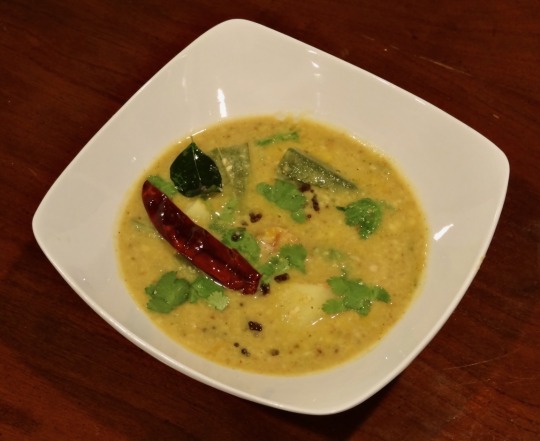
[ID: A bowl of a bright yellow stew topped with cilantro, mustard seed, chili, and curry leaf. End ID]
ಉಡುಪಿ ಸಾಂಬಾರ್ / Udupi sambar
A sambar is a lentil-and-vegetable stew distinguished by the use of a particular spice blend (Hindi: सांबर मसाला "sāmbār masālā," "sambar spice"; Kannada: ಸಾಂಬಾರ್ ಪುಡಿ "sāmbār puḍi," "sambar powder"). Sambars are a staple of South Indian and Sri Lankan cooking, sometimes made in households for multiple meals a week. The word "sambar" can be traced back to the Sanskrit सम्भार "sambhārá," "collection of things required for a particular purpose”; “spices."
The lentil used in sambar dishes is usually tur dal (split pigeon peas), though arhar dal, tuvur dal, or even blends containing masur or mung dal may be used, depending on the cook or the region. Vegetables also vary between combinations of okra, potato, ash gourd (petha), bottle gourd (doodhi / lauki), drumstick (saijan ki phalli), beetroot, tomato, carrot, pumpkin, brinjal, and pearl onions, among others. The sambar masala fries chilis, curry leaves, dal, and various spices including cumin, coriander, and fenugreek, then grinds them into a spicy, earthy, fragrant blend.
This recipe makes a sambar in the style of ಉಡುಪಿ (Udupi) cuisine—a subdivision of the cuisine of the ತುಳುವ (Tuluva) people localised in the Udupi District of Karnataka, a southeastern coastal state of India. (Tuluva cuisine is also commonly found in Dakshina Kannada, Karnataka, and Kasaragod, Kerala). In the Udupi region, sambar may be known as "ಕೊಡೆಲ್" "kodhel"; perhaps related to "ಕಡಲೆ" "kadhale" "Bengal gram"; or "ಹುಲಿ" "huḷi"; "tartness." Udupi huli has coconut oil and jaggery as its primary distinguishing features: the jaggery's deep sweetness and the earthy pungency of unrefined coconut oil combine with the spice of the chilis and the sour fruitiness of the tamarind to create a complex, flavorful, well-balanced dish.
Udupi huli may be further divided into a few major types. ಮಸಾಲೆ ಹುಳಿ ("masāla huḷi") contains shredded coconut and vegetables; ಬೋಳು ಹುಳಿ ("bolu huḷi") contains vegetables, but omits the coconut.
Hotel-style masala huli recipes typically add a lot of jaggery to produce a distinct sweetness; cut back on the amount of coconut included; and contain onion and garlic. The other main type of masala huli—“temple style”—is sattvic (from Sanskrit "सत्त्व" "sattva": "goodness," "essence," "existence"), which in this context means that onions and garlic are excluded.
A sattvic diet in Hinduism centres around the concept of maintaining sattva by eating only pure and mild (sattvic) foods, and omitting tamasic (“dark,” "inert," "destructive"; from Sanskrit तमस् "tamas") and rajasic ("exciting," "passionate," from Sanskrit रजस् "rajas") ones. The concepts of sattva, tamas, and rajas (the गुण "guṇa" system) are central to the construction of caste: the degree to which each person innately inherits each quality supposedly determines their possession of characteristics including honesty, intelligence, and goodness (sattva), stupidity and lack of creativity (tamas), and passion and pridefulness (rajas); the possession of these characteristics in turn determines their rightful place in a professional and social hierarchy. The association of certain foods with certain qualities thus links diet to caste: a distinction in diet is one of the methods by which those belonging to upper castes maintain and police caste boundaries.
This recipe makes enough pudi for one pot of sambar. Traditionally, sambar pudi is created fresh each time the dish is made, but many households make large batches and store them. In this case, omit the coconut; or, use dried coconut and store the masala in the refrigerator.
Recipe under the cut!
Patreon | Paypal | Venmo
Ingredients:
Serves 4-6.
For the sambar:
2 cups chopped vegetables
1 red onion, sliced*
1 cup (200g) yellow split pigeon peas / tur dal / ತೂರ್ ದಾಲ್ (ಹಳದಿ ಸ್ಪ್ಲಿಟ್ ಪಾರಿವಾಳದ ಬಟಾಣಿ)
4 cups (1 litre) water, or as needed
1/4 tsp ground turmeric / haldi / ಅರಿಶಿನ
2 tsp table salt
2 tsp jaggery / gur / ಬೆಲ್ಲ*
1/4 cup (60mL) tamarind pulp (from 1 Tbsp dried tamarind / imlie / ಹುಣಸೆಹಣ್ಣು)
2 tsp unrefined coconut oil / nariyal ka tel / ತೆಂಗಿನ ಎಣ್ಣೆ
Ingredient list format is English / Hindi (Latin transcription) / Kannada. The Hindi is provided for convenience while shopping.
Udupi sambar usually uses any of: gourd, brinjal (Indian eggplant), pumpkin, dumstick (saijan ki phalli), and okra. Pearl onion is not usually used in this region, but you can add whatever you want, according to taste.
*For a hotel-style sambar, include the onion; increase the jaggery to 2 Tbsp.
For the spice paste / sambar masala / ಸಾಂಬಾರ್ ಪುಡಿ ("sambar pudi"):
1/2 Tbsp split Bengal gram / chana dal / ಹಳದಿ ಸ್ಪ್ಲಿಟ್ ಗ್ರಾಂ
2 tsp split black gram / urad dal chilka / ಸ್ಪ್ಲಿಟ್ ಬ್ಲ್ಯಾಕ್ ಗ್ರಾಂ
2 tsp coriander seeds / dhaniya / ಕೊತ್ತಂಬರಿ ಬೀಜದ
1/2 tsp fenugreek seeds / methi / ಮೆಂತ್ಯ
1 tsp cumin seeds / jeera / ಜೀರಿಗೆ
1 tsp ground turmeric
5-6 curry leaves / kari pati / ಕರಿಬೇವು
3-4 Byadagi or other dried red chilis / byadagi mirch / ಬ್ಯಾಡಗಿ ಮೆಣಸಿನಕಾಯಿ
4 cloves garlic, skins on*
Large pinch asafoetida / hing / ಇಂಗು
1 cup (100g) fresh coconut (about one coconut)*
1/2 cup (120mL) water
While the ratio of ingredients in Udupi sambar pudi vary slightly, the ingredients themselves are almost always consistent.
*For a hotel-style sambar, include the garlic, and decrease the coconut in the sambar masala to 1/4 or 1/2 cup (25-50g).
The grams and pulses in this pudi have many different names. You can find them in a halal or South Asian grocery store; look on the bag for the Hindi names (since they have been transcribed into Latin, the spelling may vary from what you see here).
The urad dal you find may be husked, and thus yellow instead of black; these will work just as well.
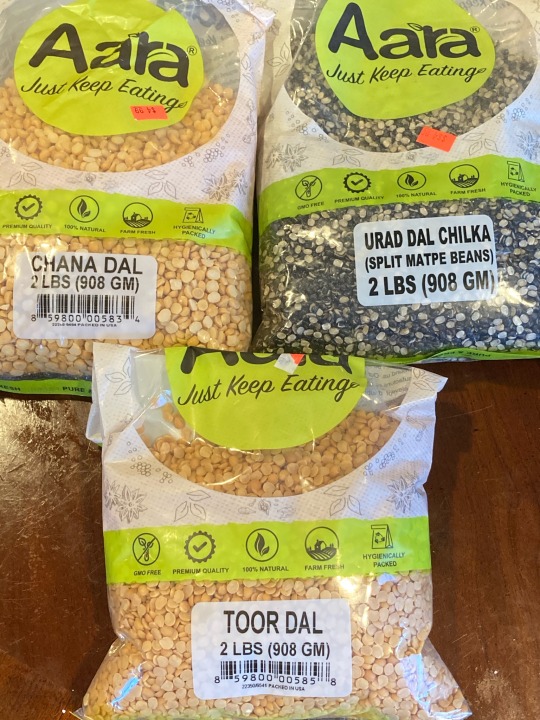
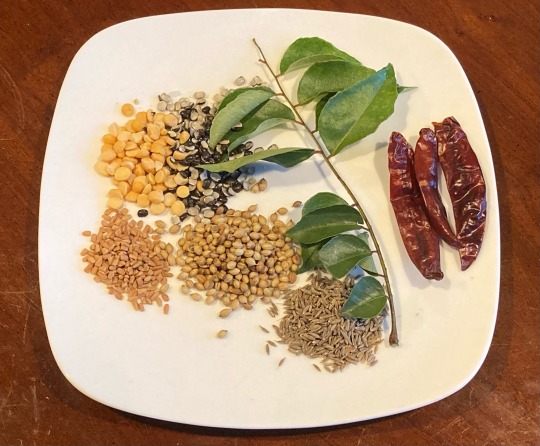
For the tempering / tadka / ಹದಗೊಳಿಸುವ:
2 Tbsp unrefined coconut oil
2 red chilis
8 curry leaves
1 tsp brown mustard seeds / rai / ಸಾಸಿವೆ ಬೀಜಗಳು
Recipes from north Karnataka may add cumin and whole, unpeeled garlic cloves to the tempering.
Instructions:
For the sambar pudi:
1. Break open the coconut and remove and shread its flesh.
If using a whole dried coconut, break into the shell with the wrong side of a hammer and pry open. Break into a few smaller pieces and peel with a vegetable peeler until the skin is removed from the white flesh, wearing something to protect your hand. Soak in warm water for several minutes to soften, and then grate or food process.
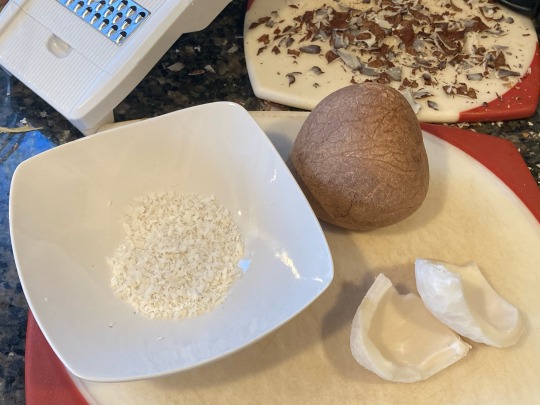
2. Heat 2 Tbsp of coconut oil in a skillet on medium-low. Add asafoetida and fry for 30 seconds, until no longer raw-smelling. Add dal and fry, stirring often, for 30 seconds until golden brown; add coriander, mustard, fenugreek, and cumin seeds and fry until fragrant.
3. Add curry leaves and fry until wilted, then add garlic and dried chilis and fry another 30 seconds to a minute, until fragrant.
4. Add coconut and fry, stirring often, for another few minutes until a shade darker. Add turmeric and stir.
5. Grind all ingredients into a paste in a mortar and pestle, then mix in about 1/2 cup water to loosen (if using dried coconut, you may need more water).
Or, put all ingredients along with 1/2 cup water into a blender or food processor and process until a relatively smooth paste forms.
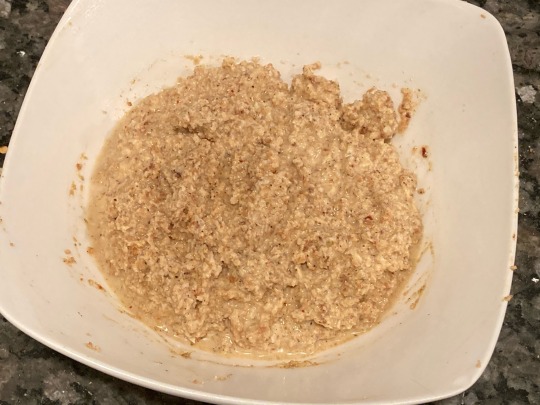
For the sambar:
1. Wash tur dal to remove excess starch. Simmer dal with 2 cups water, 1/4 tsp ground turmeric, and 1 tsp coconut oil for about 30 minutes until very tender. Mash until relatively smooth with a wooden spoon or bean masher, or process briefly with an immersion blender.
You may soak the dal in water after rinsing them to reduce the cooking time, but it is not necessary.
2. Meanwhile, make the tamarind paste. Soak 1 Tbsp tamarind dried pulp in 1/4 cup hot water for 20-30 minutes. Squeeze the tamarind into the water to extract the pulp. Discard the tamarind seeds and husk. Optionally, depending on your preferred texture, push the mixture through a metal sieve.
3. Prepare vegetables. Slice the onion; remove ends of okra and drumsticks and cut into 2-inch pieces; quarter tomatoes; quarter brinjal; peel pumpkin and cut into cubes; peel and cube potatoes.
4. If using onion, add a teaspoon of coconut oil to a large pot and fry until translucent.
5. In the same pot, boil vegetables in just enough water to cover, along with a pinch of salt, until they are beginning to soften.
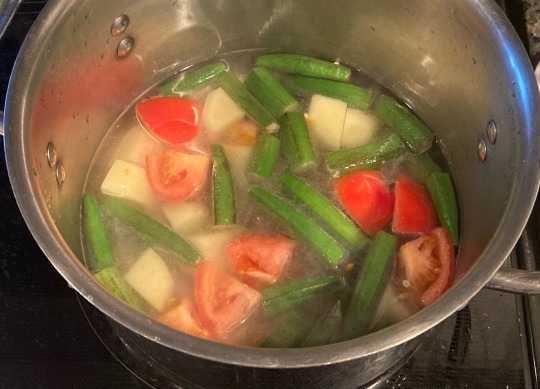
Some recipes call for the vegetables to be boiled, and others call for them to be steamed. I prefer boiling, since it produces a nice savory broth.
6. Mix vegetables, dal, tamarind, jaggery, sambar pudi, and salt to taste and simmer 5-10 minutes to allow flavors to combine and vegetables to cook under tender. Add water as needed. Remove from heat and stir in cilantro. Taste and adjust salt.
The final sambar should be pourable, like a thick soup—Karnataka sambar is typically thinner in consistency than Tamil Nadu versions.
For the tadka:
1. Heat coconut oil in a small skillet on medium heat. Add tempering ingredients and fry, stirring often, until chilis and curry leaves are a couple shades darker and the mixture is fragrant.
2. Pour the oil and tempering ingredients into the sambar and stir in. If you like, retain some of the tadka as a garnish to serve.
3. Serve warm, in individual bowls, alongside long-grain white rice. To eat drumsticks, scoop the center out and eat it; the tough outer rind is left.
If you intend to save some sambar, it's a good idea to make just enough tadka for what you plan to eat that day, and then make fresh tadka to pour over the reheated leftovers.
112 notes
·
View notes
Text
since i haven't seen it being pointed out before
all of the first stoats' names essentially mean "light"
kiran is of sanskrit origin meaning "ray of light" (and, according to wikipedia, an explicitly unisex name), uri is a hebrew name meaning "my light", hester is a variant of the name esther (of biblical/jewish origin) which comes from the same old persian root as the word "star", and, while i didn't find any particularly reliable source, various babyname websites at least seem to agree that jomei is a japanese name meaning "spread light"
additionally, their names seem to correlate with their purpose/position in last bast:
jomei is the speaker, they are in charge of propaganda - quite literally spreading the belief system and worldview of the first stoats aka the Light. it feels like this name is extremely straightforward in its meaning, but i was also unable to find much else on it, so there may be some additional hidden truth that i'm missing so far.
hester is the silence (the one with the gas mask missing their lower jaw and tongue) and their sphere of influence is secrets. now, i'm no religious scholar, and i have all of my information from quite literally the introductory paragraphs of the wikipedia article on the name esther. however, it seems that queen esther only took this name after ascending to the throne of persia to hide her true identity. this is reflected in the hebrew root of the name esther translating into "hide"/"conceal". (i am unable to provide more info on this, but anybody with a working understanding of how hebrew works and/or with more insight on the book of esther, feel free to interject/correct/add on to this)
uri is our beloved stoat pope. apparently, the name uri comes from the verb for "to shine" (to either be or to give light) and the mark of possession, resulting in the first connotation i mentioned earlier - "my light". this possessive marker, however, can also be interpreted as the name Yah which would be an abbreviation of YHWH - a marker of the divine, if you will. Therefore, Uri can also mean "Yah is my light", a very fitting name for the stoat whose department we only see called "faith".
i was unable to find a deeper meaning behind kiran's name, although to me "beam of light" feels very much like a name befitting the first stoats' leader. considering the way they commanded the wolf of theseus, it also seems to reflect the way their magic/their brand of control worked (their line of sight was part of how they controlled the wolf, indicating that was a key part of either their magic or the conditioning inflicted on the wolf - i'm partial towards the latter, considering how the wolf reacted to tula after she healed it). if anybody has anything more concrete to offer, though, i am all ears!
anyways, the first stoats' names are really cool, and we as a fandom don't talk enough about them because they died so fast. huge props to aabria for this fun bit of world building!
(disclaimer: as mentioned above, i have no background in theology or judaism, nor do i have any deeper knowledge of sanskrit, hindi, and indian mythology/folklore, nor japanese, and japanese mythology which would give me a deeper understanding of these names. my information comes from google and while i did try my best to verify the claims, i am fallible and happen to currently be very tired, so please correct me, if i made any mistakes!)
#burrow's end#d20#burrow's end spoilers#d20 spoilers#f: d20#f: burrow's end#c: kiran (be)#c: stoat pope uri (be)#c: the silence hester (be)#c: the speaker jomei (be)
103 notes
·
View notes
Text
Untranslatable words (part 3)
Here are part 1 and part 2. I have also made other posts with untranslatable words in Spanish and German.
Arabic: غرفة [ḡurfa] (the amount of water that can be held in one hand), يقبرن [yaqbirna] (literally “may you bury me”, wishing that a loved one outlives you because of how unbearable life would be without them)
Bantu: mbuki-mvuki (to shed one’s clothing spontaneously and dance naked in celebration)
Dutch: gezellig (cozy, nice, pleasant, sociable), struisvogelpolitiek (literally “ostrich politics”, an evasive style of politics that fails to address problems by either ignoring them or by creating a false sense of security through ineffective measures)
Finnish: poronkusema (the distance a reindeer can comfortably travel before taking a break, around 7.5 kilometers/4.7 miles)
French: feuillemorte (of the color of a faded, dying leaf), l’appel du vide (literally “the call of the void”, the inexplicable draw of the dangerous and unknown future), noceur (someone who goes to sleep late or not at all or one who stays out late to party)
German: Drachenfutter (literally “dragon fodder”, the gift a husband gives a wife when he is trying to make up for bad behaviour), Kabelsalat (literally “cable salat”, cable clutter)
Greek: μεράκι (intense passion)
Hungarian: szimpatikus (nice, likeable)
Japanese: ぼけっと [boketto] (gazing vacantly into the distance without thinking about anything), 風物詩 [fūbutsushi] (the things that evoke memories of a particular season)
Hawaiian: ʻakihi (listening to directions and then walking off and promptly forgetting them)
Hindi: जुगाड़ (jugāṛ) (a process or technique that lessens disorder in one’s life, making it easier to manage or more convenient)
Icelandic: tíma (not being ready to spend time or money on a specific thing despite being able to afford it)
Indonesian: jayus (a joke so terrible and unfunny it can’t help but make you laugh)
Inuktitut: ᐃᒃᑦᓱᐊᕐᐳᒃ [iktsuarpok] (the act of repeatedly going outside to check if someone is coming)
Italian: commuòvere (to move in a heartwarming way)
Malay: pisan zapra (the time needed to eat a banana)
Norwegian: forelsket (the indescribable feeling of euphoria experienced as one begins to fall in love)
Portuguese: nefelibata (literally “cloud-walker”, one who lives in the clouds of their own imagination or dreams or does not obey the conventions of society), saudade (a vague, constant desire for something that does not and probably cannot exist, a nostalgic longing for someone or something loved and then lost)
Russian: разлюбит�� (razliubit) (to fall out of love)
Sanskrit: कल्प [kalpa] (the passing of time on a grand cosmological scale)
Scottish Gaelic: sgrìob (the peculiar itchiness that settles on the upper lip before taking a sip of whiskey)
Spanish: cotisuelto (someone who insists on wearing their shirt tails untucked)
Swedish: mångata (the roadlike reflection of the moon on the water), smultronställe (literally “place of wild strawberries”, a special place treasured for solace and relaxation, free from stress or sadness), tretår (on its own, “tår” means a cup of coffee and “patår” is the refill of said coffee, so a “tretår” is therefore a second refill)
Tagalog: kilig (to experience shivers and suffer pangs from strong emotions, usually romantically)
Ursu: گویا [goyā] (a transporting suspension of disbelief, an “as-if” that feels like reality), ناز [nāz] (the pride and assurance that comes from knowing one is loved unconditionally)
Wagiman: murr-ma (the act of searching for something in the water with only one’s feet)
Welsh: glas wen (literally “blue smile”, one that is sarcastic or mocking), hiraeth (homesickness, nostalgia, a longing for somewhere one cannot or will not return to)
Yiddish: לופֿטמענטש [luftmentsh] (literally “air person”, someone who is a bit of a dreamer)
#langblr#arabic#bantu#dutch#finnish#french#german#greek#hungarian#japanese#hawaiian#hindi#icelandic#indonesian#inuktitut#italian#malay#norwegian#portuguese#russian#sanskrit#scottish gaelic#spanish#swedish#tagalog#ursu#wagiman#welsh#yiddish
152 notes
·
View notes
Text
Can't stop thinking about @sinistergooseberries tags on this post pointing out that since Prans name origins from the Sanskrit word Prana, which means 'life' or 'life source' in Telugu, Hindi and Sanskrit. So everytime Pat calls to Pran as "My Pran" he is pretty much referring Pran as "his life".
My heart can't handle it when Pat calls Pran "My Pran" whenever I read it in fics. Now I'm sure I'll never recover after this.
#bad buddy#how can i move on from them#patpran my beloved#i love them so much#pat calls pran “my pran”#me: dies#pat is just happy that he gets to call pran *his*#and i know Pran loves it#they r just idiots in love#and I'm in love with them#bad buddy series#bad buddy brain rot#bad buddy the series#patpran#bbs
81 notes
·
View notes
Photo

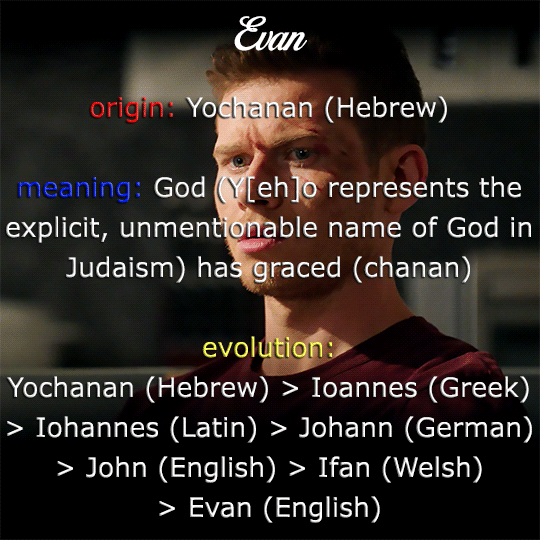

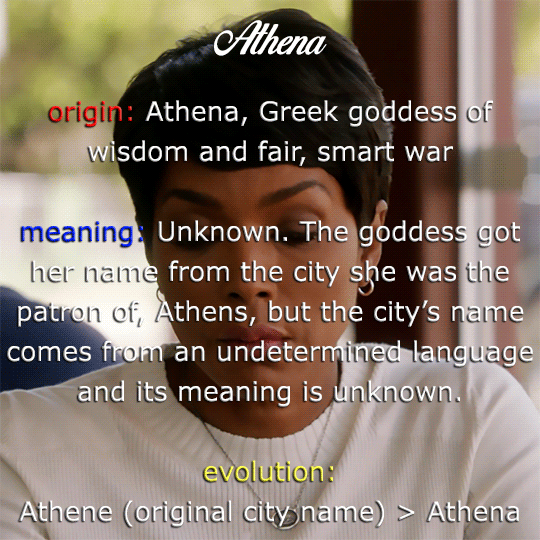
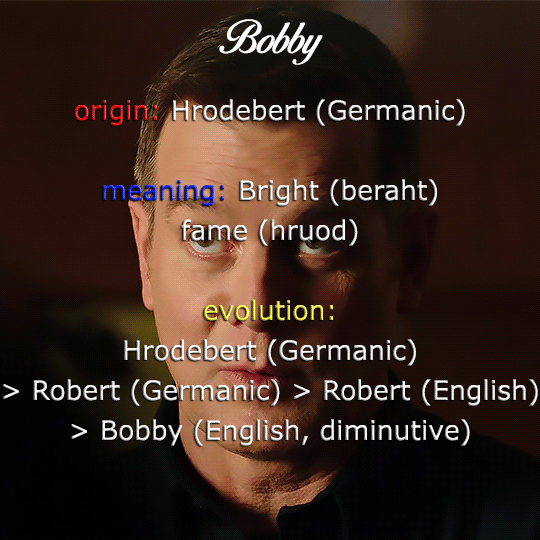
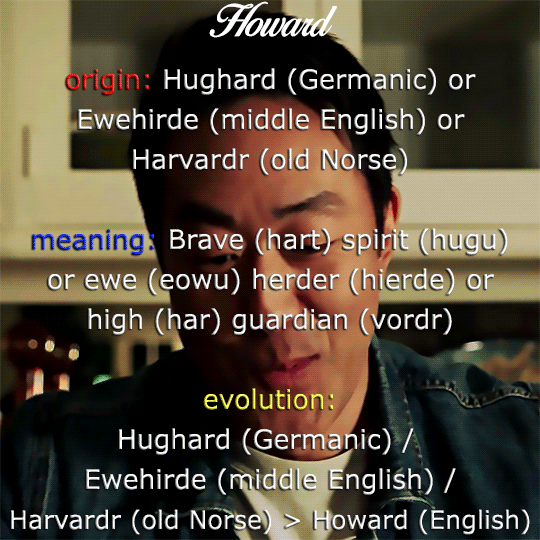



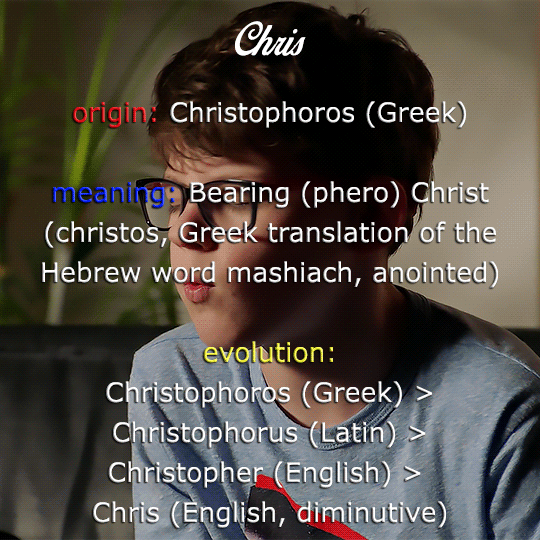
I’m making this post at the request of the lovely @siflovesbuddie. Thank you for sending me your ask, and for your interest in my own thoughts! xoxox
Resource post with names info for all the notable 911 characters, compiled by the fandom’s resident name geek (slightly better than your average baby name site, which doesn’t give a damn about accuracy or about respecting the original cultures).
Gif makers and fic writers, please feel free to use this! If you do, credit or a reblog would be nice.
Also for anyone into enjoying different cultures and languages!
Here’s an open invitation if anyone wants to consult me on any other character’s name.
Under the cut: the info for all the characters in text, including a little more detail and explanation for the (giffed) main characters

Michael
origin: Mikhael (Hebrew). meaning: Who (mi) is like (ka) God (el)? evolution: Mikhael (Hebrew) > Michael (Greek) > Michael (Latin) > Michael (English)
David
origin: David (Hebrew). meaning: Beloved (dod, spelled in Hebrew exactly like David). evolution: David (Hebrew) > David (Greek) > David (Latin) > David (English)
May
origin: Maia (Latin). meaning: The name is derived from the Roman month, which is itself named after Maia, a Roman goddess of spring. evolution: Maia (Latin) > May (English)
Harry
origin: Heimirich (Germanic). meaning: Home (heim) ruler (rich). evolution: Heimirich (Germanic) > Heinrich (Germanic) > Henri (French) > Harry (middle English)
Josh
origin: Yehoshua (Hebrew). meaning: God (Yeho and its abbreviation Yo represent the explicit, unmentionable name of God in Judaism), save (shua)! evolution: Yehoshua (Hebrew) > Iosue (Latin) > Joshua (English) > Josh (English, short form)
Denny
origin: Dionysos (Greek). meaning: God (dios) from Nysa (the region of Greece that the god of wine and dance Dionysos was born in). evolution: Dionysos (Greek) > Dionysius (Latin) > Denis (French) > Dennis (English) > Denny (English, diminutive)
Linda
origin: Lintha (Germanic). meaning: Soft (linth). Nowadays sometimes merged with the Spanish word for beautiful (linda). evolution: Lintha (Germanic) > Linda (Germanic) > Linda (English)
Sue
origin: Shoshana (Hebrew). meaning: Lily (shoshan. Sometimes conflated with rose). evolution: Shoshana (Hebrew) > Sousanna (Greek) > Susanna (Latin) > Susan (English) > Sue (English, short form)
Albert
origin: Adalbert (Germanic). meaning: Noble (adal) and bright (beraht). evolution: Adalbert (Germanic) > Albert (Germanic) > Albert (English)
Ravi
origin: Ravi (Sanskrit). meaning: Sun (ravi). evolution: Ravi (Sanskrit) > Ravi (Hindi, Tamil, Bengali, Gujarati, Nepali and more).
Abby
origin: Avigail (Hebrew). meaning: My father (avi)'s joy (gil). evolution: Avigail (Hebrew) > Abigail (Latin) > Abigail (English) > Abby (English, diminutive)
Carla
origin: Karl (Germanic). meaning: Man (karl. Sometimes used specifically in the context of ‘free man’). evolution: Karl (Germanic) > Carl (German) > Carl (English) > Carla (English, feminine)
Ana
origin: Chana (Hebrew). meaning: Grace (chen). evolution: Chana (Hebrew) > Anna (Greek) > Anna (Latin) > Ana (Spanish)
Eva
origin: Chava (Hebrew). meaning: Living (chai. The biblical character of Chava is described as ‘em kol chai,’ the mother of all who are living). evolution: Chava (Hebrew) > Eua (Greek) > Eva (Latin) > Eva (English)
Lou
origin: Hludwig (Germanic). meaning: Famous (Hlut) in battle (wig). evolution: Hludwig (Germanic) > Ludwig (Germanic) > Ludovicus (Latin) > Louis (French) > Louis (English) > Lou (English, short form)
Shannon
origin: Sionainn (Irish). meaning: Old (sen). It derives from the name of the longest river in Ireland. evolution: Sionainn (Irish) > Shannon (Irish) > Shannon (English)
Isabel
origin: Elisheva (Hebrew). meaning: My God (eli) is perfection (sheva is the Hebrew word for seven, a number representing perfection in Jewish tradition) or My God (eli)'s oath (shvua). evolution: Elisheva (Hebrew) > Elisabet (Greek) > Elisabeth (Latin) > Isabel (middle Occitan) > Isabel (Spanish)
Ramón
origin: Raginmund (Germanic). meaning: Decision (regin) of protection (mund). evolution: Raginmund (Germanic) > Raimund (Germanic) > Ramon (Catalan) > Ramón (Spanish)
Josephina
origin: Yoseph (Hebrew). meaning: He will add (yosiph. From the biblical language of oath taking: ‘So will God do to me and so he will add if I...’). evolution: Yoseph (Hebrew) > Ioseph (Greek) > Ioseph (Latin) > Joseph (French) > Joséphine (French, feminine) > Josephina (English)
Helena
origin: Helene (Greek). meaning: Torch (helene) or possibly derived from moon (selene). evolution: Helene (Greek) > Helena (Latin) > Helena (English)
Lucy
origin: Lucius (Latin). meaning: Light (lux). evolution: Lucius (Latin) > Lucia (Latin, feminine) > Lucie (French) > Lucy (English)
Toni
origin: Antonius (Latin). meaning: The name derives from Etruscan and its meaning is unknown. The first notable historical figure to carry the name was Marcus Antonius (Mark Anthony), bringing many to link the meaning to him, or incorrectly to the Greek word for flower (anthos). evolution: Antonius (Latin) > Antonia (Latin, feminine) > Antonia (English) > Toni (English, diminutive)
Nia
origin: Nia (Swahili). meaning: Purpose, aim. evolution: Nia (Swahili) > Nia (English)
Beatrice
origin: Viator (Latin). meaning: Voyager, traveler. evolution: Viator (Latin) > Viatrix (Latin, feminine) > Beatrix (Latin) > Beatrice (Italian) > Beatrice (English)
Samuel
origin: Shmuel (Hebrew). meaning: His name (shmo) is God (el). evolution: Shmuel (Hebrew) > Samouel (Greek) > Samuhel (Latin) > Samuel (English)
Doug
origin: Dùbhghlas (Gaelic). meaning: Dark (dubh) river (glais). evolution: Dùbhghlas (Gaelic) > Dùghlas (Gaelic) > Douglas (English) > Doug (English, short form)
Ali
origin: Adalheidis (Germanic) or Alexandros (Greek). meaning: There are two names whose English diminutives are Ali. Adalheidis means noble (adal) kind (heit). Alexandros means defender (alexo) of men (andros). evolution: Adalheidis (Germanic) > Adelais (Latin) > Aalis (middle French) > Alison (French, diminutive) > Alison (English) > Ali (English, diminutive) or Adalheidis (Germanic) > Adelais (Latin) > Aalis (middle French) > Alice (French) > Alice (English) > Ali (English, diminutive) or Alexandros (Greek) > Alexandra (Greek, feminine) > Alexandra (English) > Ali (English, diminutive)
Daniel
origin: Daniel (Hebrew). meaning: God (el) judges me (dani). evolution: Daniel (Hebrew) > Daniel (Greek) > Daniel (Latin) > Daniel (English)
Lena
origin: Helene (Greek) or the town of Migdal (Hebrew). meaning: There are two names whose short form is Lena. Helene means torch (helene) or is possibly from the Greek word for moon (selene). Magdalena refers to a woman who is from Magdala, the Greek pronunciation for Migdal, the town in ancient Israel mentioned in the Bible. The town’s name means tower in Hebrew. evolution: Helene (Greek) > Elena (middle Slavic) > Yelena (Russian) > Lena (Russian, short form) or Migdal (Hebrew) > Magdala (Greek) > Magdalene (Greek) > Magdalena (Latin) > Magdalena (English) > Magdalena (English, short form)
Noah
origin: Noach (Hebrew). meaning: Comfortable, pleasant (noach) or resting (nach). evolution: Noach (Hebrew) > Noah (German) > Noah (English)
Taylor
origin: Taylor (English). meaning: Tailor (from the Italian verb ‘taliare,’ to cut). evolution: Taylor (English)
Jeffrey
origin: Gautfrid (Germanic). meaning: While ‘frid’ refers to peace (fridu), ‘gau’ might derive from the word territory (gawi) or from gautaz, a reference to the Germanic tribe of Geat. evolution: Gautfrid (Germanic) > Geoffroi (middle French) > Geoffrey (English) > Jeffrey (English)
Elaine
origin: Helene (Greek). meaning: Torch (helene) or possibly from the Greek word for moon (selene). evolution: Helene (Greek) > Helena (Latin) > Hélène (French) > Elaine (English)
Jonah
origin: Yona (Hebrew). meaning: Dove (yona). evolution: Yona (Hebrew) > Jonah (English)

Evan
origin: Yochanan (Hebrew). meaning: God (Yeho and its abbreviation Yo represent the explicit, unmentionable name of God in Judaism) has graced (chanan). evolution: Yochanan (Hebrew) > Ioannes (Greek) > Iohannes (Latin) > Johann (German) > Johan (middle English) > John (English) > Ifan (Welsh) > Evan (English)
Eddie
origin: Eadmund (old English). meaning: Rich, wealthy (ead) protection (mund). evolution: Eadmund (old English) > Edmund (English) > Edmundo (Spanish and Portuguese) > Eddie (English, diminutive)
Athena
origin: Athena, Greek goddess of wisdom and fair, smart, brave war. meaning: Unknown. The goddess got her name from the city she was a patron of, Athens, but the city’s name comes from an undetermined language (likely an unknown language spoken in Greece before Ancient Greek even developed), so its meaning is also a mystery. Most people therefore associate the meaning of the name with the qualities the goddess represented. evolution: Athene (the name of the city in Ancient times) > Athena
Bobby
origin: Hrodebert (Germanic). meaning: Bright (beraht) fame (hruod). evolution: Hrodebert (Germanic) > Robert (Germanic) > Robert (English) > Bobby (English, diminutive)
Howard
origin: There are three names that have entered modern English as Howard, Hughard (Germanic), Ewehirde (middle English) and Harvardr (old Norse), making any of these likely to be considered the origin of the name. meaning: Brave, hardy (hart) spirit (hugu) or ewe (eowu) herder (hierde) or high (har) guardian (vordr). evolution: Hughard (Germanic) / Ewehirde (middle English) / Harvardr (old Norse) > Howard (English)
Maddie
origin: The town of Migdal (Hebrew) or Mahthilt (Germanic). meaning: There are two names whose English diminutives are Maddie. Magdalene refers to a woman who is from Magdala, the Greek pronunciation for Migdal, the town in ancient Israel mentioned in the Bible. The town’s name means tower in Hebrew. Madison means Maud’s son, Maud originating in a name that means might (maht) in battle (hilt). evolution: Migdal (Hebrew) > Magdala (Greek) > Magdalene (Greek) > Madeleine (French) > Madeline (English) > Maddie (English, diminutive) or Mahthilt (Germanic) > Matilda (English) > Maud (French) > Madison (English) > Maddie (English, diminutive)
Hen
origin: Heimirich (Germanic). meaning: Home (heim) ruler (rich). evolution: Heimirich (Germanic) > Heinrich (Germanic) > Henri (French) > Henriette (French, feminine) > Henrietta (English) > Hen (English, diminutive)
Karen
origin: Aikaterine (Greek). meaning: There are two Greek names it might have been influenced by. Hekaterine, meaning each of the two (hekateros) or Hekate meaning far off (hekas). Either way, during the early Christian era, the name's spelling was changed, adding an ‘h’ after the ‘t’ and tying it to the Greek word for pure (katharos). evolution: Aikaterine (Greek) > Katerina (Latin) > Katharina (Danish) > Karen (Danish) > Karen (English)
Chris
origin: Christophoros (Greek). meaning: Bearing (phero) Christ (christos, meaning anointed, Greek translation of the Hebrew word ‘mashiach’ which has entered English as ‘messiah’). evolution: Christophoros (Greek) > Christophorus (Latin) > Christopher (English) > Chris (English, diminutive)
#911edit#911 gifs#evan buckley#eddie diaz#hen wilson#christopher diaz#chimney han#bobby nash#athena grant#karen wilson#maddie buckley#mbg#mg#911 edit#may grant#ravi panikkar#911onabc#911 on abc#911abc#911 abc
318 notes
·
View notes